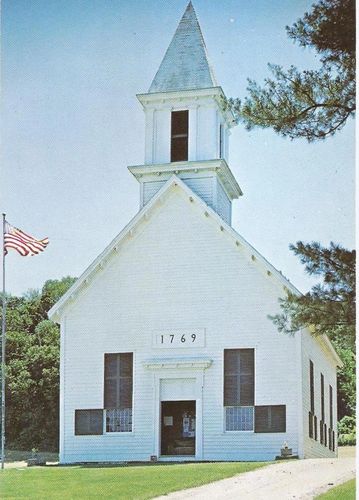Welcome to Indian Castle Church

About Us

.An association between the Mohawk Indians and the Anglican Church was first formed in the first decade of the 18th century, when Society for the Propagation of the Gospel missionaries occasionally braved the frontier wilderness to preach at Indian villages or castles. By the 1760’s, Christianity had become very fashionable among the eastern Iroquois; so much so that the Mohawks at the Canajoharie or upper castle began to "tease" the Indian Superintendent, Sir William Johnson, for a missionary and church of their own. Johnson was an Anglican and an honorary member of the Society for the Propagation of the Gospel, but it was more than loyalty to the Church which. prompted his decision to build an Anglican chapel at the upper castle in 1769. Anglicanism was the State Religion, and its liturgy contained statements of loyalty to the English monarch. In the turbulent decade which preceded the American Revolution, Johnson wanted to insure that the Mohawks, at least, were socialized with values which would support and preserve the established order. Construction was started on the new church at the upper Mohawk castle (now called the Indian Castle Church) in the fall of 1769, and it was completed in the late spring of the following year. All of the building expenses came out of Johnson's own pocket. The only contemporary description of the building indicates that it was "a Wooden Church… 50 feet long, by 32 wide." . Dedication services were held on June 17, 1770, and Rev. Harry Munro of St. Peter's Church in Albany preached the sermon. Although Johnson was never successful in finding a permanent missionary for the upper castle, the missionary at the lower castle, John Stuart, held frequent services in the new church. Many Mohawk warriors left the upper castle and moved to Canada in the beginning of the American Revolution, largely due to the influence of the loyalist Indian Joseph Brant. Little is known about the Indian Castle Church during this period. In all probability it stood vacant, but it may have served as a neighborhood refuge for homeless Whigs. After the Revolution the church served a number of Protestant congregations. Reformed Dutch seem to have been the first whites to claim the structure. A congregation was formed in 1800 under the Reverend Christopher Pick. In 1820 a "Union Congregation" was formed, but little is known of their activities. Presbyterians used the building from 1833 until at least 1835; Lutherans were active there in 1838. On February 1, 1855 a meeting of the inhabitants living near the church was called "for taking into consideration the propriety of repairing; or rebuilding a new house [of worship] upon the site of the old." Another Union Church Society was formed, and Methodists, Presbyterians, Calvinists, Lutherans and Universalists, cooperated in the organization. The church was almost ninety years old by this time and badly in need of repair. It had been built upon a Georgian plan, with the main entrance in one of the long walls, and like most 18thcentury churches in the Mohawk Valley its longitudinal axis was east and west. It was decided to rebuild the church, probably at least in part because the old church was out of style. The new specifications called for a more classical Greek Revival form: the structure was to be turned about ninety degrees so that one of the shorter walls faced north; a new facade was to be constructed in this wall, and the arched Georgian windows were to be replaced by rectangular frames. Essentially the building was completely changed, except for the super-structure and one small window which was replaced in the south attic wall. The rebuilt exterior conformed quite closely to the typical small "country" meeting house style, but the roof still retained its steep 18th century pitch. The Union Church Society continued to care for the structure until 1925, when regular services were discontinued. The church is presently open to the public as an historic site, and it is maintained by the Indian Castle Church Restoration and Preservation Society, a non-profit, Regents- chartered, educational organization
Subscribe
Contact Us
Better yet, come for a visit
109 Dillenbeck Rd, Little Falls, NY 13365
Open
Memorial Day to Labor Day
Monday - Sunday 9am-6pm
Drop us a line!
Event
June 14th - June 16th
250th Anniversary Celebration
109 Dillenbeck Rd, Little Falls NY 13365
+ Event Details
June 14th - June 16th
250th Anniversary Celebration
June 14th - Friday Old Fashioned Ice Cream Social at 5:00pm. Hayrides start at 6:00
Saturday June 15th - Run for the Bell 5K - Refistration begins at 7:30am, Race begins at 8:30 am. For registration and more information, contact Rich & Roxanne Congdon at 315-823-1393 or email at rnr@twcny.rr.com
Mohawk Cultural Demonstrations 10 am - 4 pm Akwesasne Mohawk Singers and Dancers, Mohawk Storytelling with Kay Olan, The Wampum Chronicles by Darren Bonaparte, Mohawk Artisans from "Two House Design Crafters"
18th Century Living History Demonstrators 10 am - 4 pm , Glenn Bentz, Seneca Interpreter, Claus' Rangers, British Indian Department Paul Supley, Palatine Farmer/Militiaman
Sunday June 16th - Church service officiated by Father Steve Scarcia 10am. Service will end with the "Ballad of the Indian Castle Church" britten and sung by Ken Gies, followed by Fellowship
109 Dillenbeck Rd, Little Falls NY 13365
Photo Gallery
Copyright © 2019 Indian Castle Church - All Rights Reserved.



















